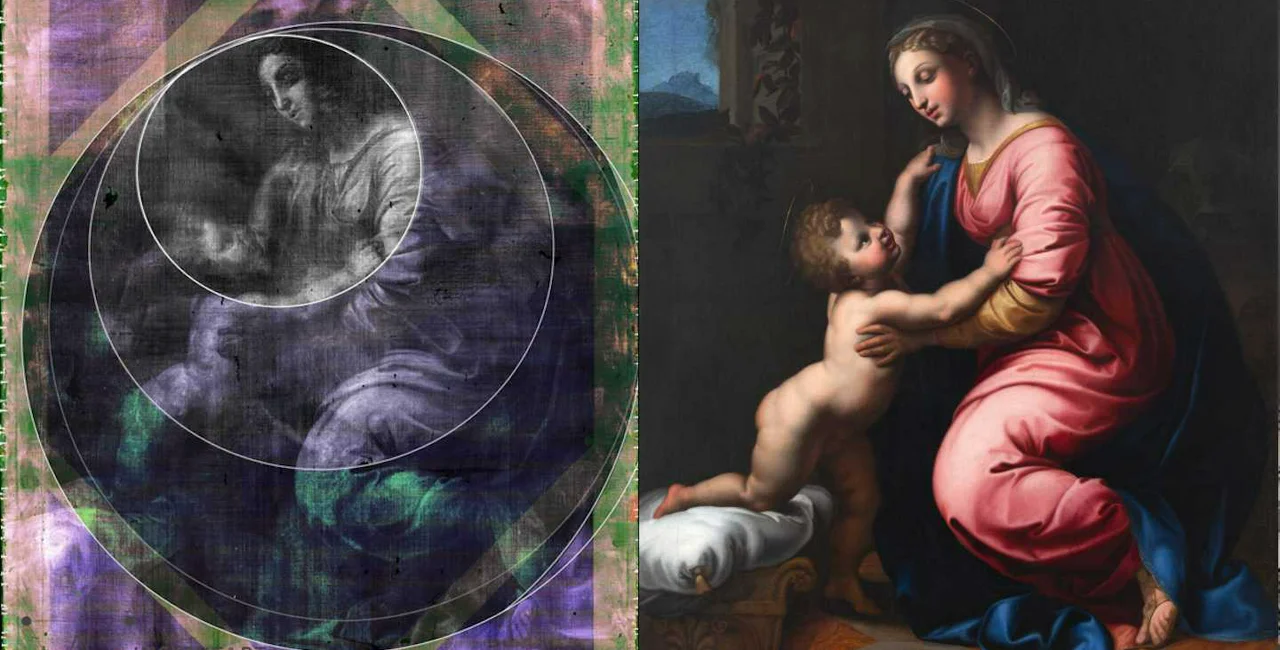A Czech startup has used space technology to authenticate a 500-year-old painting by Renaissance artist Raphael. As with most famous artists from the past, debates about the authenticity of some of their work still continue, meaning the difference of millions of dollars in value.
Raphael’s painting Madonna and Child has seen its authenticity repeatedly questioned. Some experts claimed that it was the work of Raphael’s students, or even a copy passed off as the original.
The painting’s authenticity was recently confirmed by the Czech company InsightART. The company’s RToo robotic scanner is one of the first x-ray machines specialized in art investigation. The scanner had already been used in 2018 to authenticate a previously unknown painting by Vincent van Gogh.

The machine, manufactured by the Czech company Advacam, uses a particle detector developed for space exploration at the European Organization for Nuclear Research (CERN).
“This technology. which is also used to measure radiation at the International Space Station. is capable of detecting and counting single photons, as well as establishing their exact wavelength,” physicist and InsightArt co-founder Josef Uher said. The technology analyzes the painting without disturbing its structure.
“While the standard x-ray machine only creates a black and white image, RToo provides color, or spectral, x-ray images, which allow the materials to stand out on the basis of their elemental composition. Besides making use of a special robotic platform, supplied by another Czech company, Radalitica, this is the key advantage of the RToo x-ray machine,” he added.

Art restorer and InsightArt co-founder Jiří Lauterkranc said the spectral x-ray scans revealed the internal structure of Raphael’s painting in detail. “Based on spectral x-ray imaging, it could be established that the overall concept of the painting was thought through in great detail — from the foundation layers to the final glazes,” he said.
“It is evident that the painting was carefully conceived by Raphael himself and with a clear vision of its intended final form. The findings of the various analyses therefore confirm that the piece was painted by Raphael personally, without the aid of his workshop assistants and apprentices,” he added.
Thanks to the deployment of space technology, InsightART could take advantage of the business accelerator of the European Space Agency (ESA BIC). “We are used to different kinds of technological applications that may make use of satellite data, navigation systems, airplanes or satellites. However, the combination of space technology and art is very unconventional; we only have one such project,” ESA BIC project manager Michal Kuneš said.
The painting Madonna and Child is signed and dated “Raphael Urbinas Pingebat MDXVII, Roma” It was painted by Raphael — also known as Raffaello Santi — in 1517 at the commission of Pope Leo X as an altarpiece for the Sanctuary of the Holy House of Loreto. One year later, Raphael used the same motifs for his Great Holy Family, which the pope donated to the French royal family. It later became part of the Louvre collection.

Raphael’s Madonna and Child remained in the Vatican until 1798. After the occupation of Rome by one of Napoleon’s armies, the painting was taken to Paris where it became part of Napoleon’s collection. After Napoleon’s fall in 1813, the painting became property of the France’s King Louis XVIII, who sold it to Charles Bosanquet, the first vice chancellor of Newcastle University.
Bosanquet’s family owned the painting until 1928, when it made its way back to France thanks to an art dealer named Dr. Hahn. In Paris, the painting was acquired by Ernst Beleuer who brought it to Prague and subsequently sold it to Otomar Švehla. He unsuccessfully tried to sell it to both the Czechoslovak President’s Office and German dictator Adolf Hitler.
After Švehla’s death the painting fell to his widow, Emilie Švehlová. In 1992, the painting found itself in Slovakia where it was bought by a Czech entrepreneur. It is now part of a private collection.

Since then, the Madonna and Child has been studied by several experts and Raphael specialists. Raymond Ondráček started restoring the painting in 2002. Ondráček’s work was continued by another two Czech fine art restorers, Jiří Lauterkranc a Jiří Živný.
The restoration, concluded in 2019, took place under the scrutiny of an international advisory board of experts from Italian and Czech institutions.
The last part of the process took place 2019 and included the reviewing and updating of all previous analyses and investigations of the painting.
Some of the analyses focused on the creation of Madonna and Child as well as its relation to Raphael’s Great Holy Family. These examinations included the identification of the under-drawing, the technological construction and the internal structure of the painting. It was at this stage that InsightART became a part of the project.
InsightART, a subsidiary of Advacam, was founded by physicist Uher, restorer Lauterkranc and entrepreneur Jan Sohar.
The space incubator ESA BIC Prague was founded in May 2016 as a part of the European Space Agency’s Business Incubation Center network. The centers host and support startups that deploy, advance and commercialize space technologies.
ESA BIC Prague is operated by CzechInvest, with further support by the Prague City Hall, the Ministry of Transport, and the Ministry of Industry and Trade. The incubator is based in Prague’s Adria Palace. ESA BIC Brno, founded in March 2018, is based in Brno’s South Moravian Innovation Centre. ESA BIC Brno is supported by the South Moravian Region.
State agency CzechInvest supports business and investments. The agency’s combination of regional, central and international operations allows it to connect global trends with regional conditions in the Czech Republic. CzechInvest’s main objective is transforming the Czech Republic into an innovation leader of Europe. Established in 1992, CzechInvest is a state contributory organization under the Czech Ministry of Industry and Trade.












 Reading time: 4 minutes
Reading time: 4 minutes 























